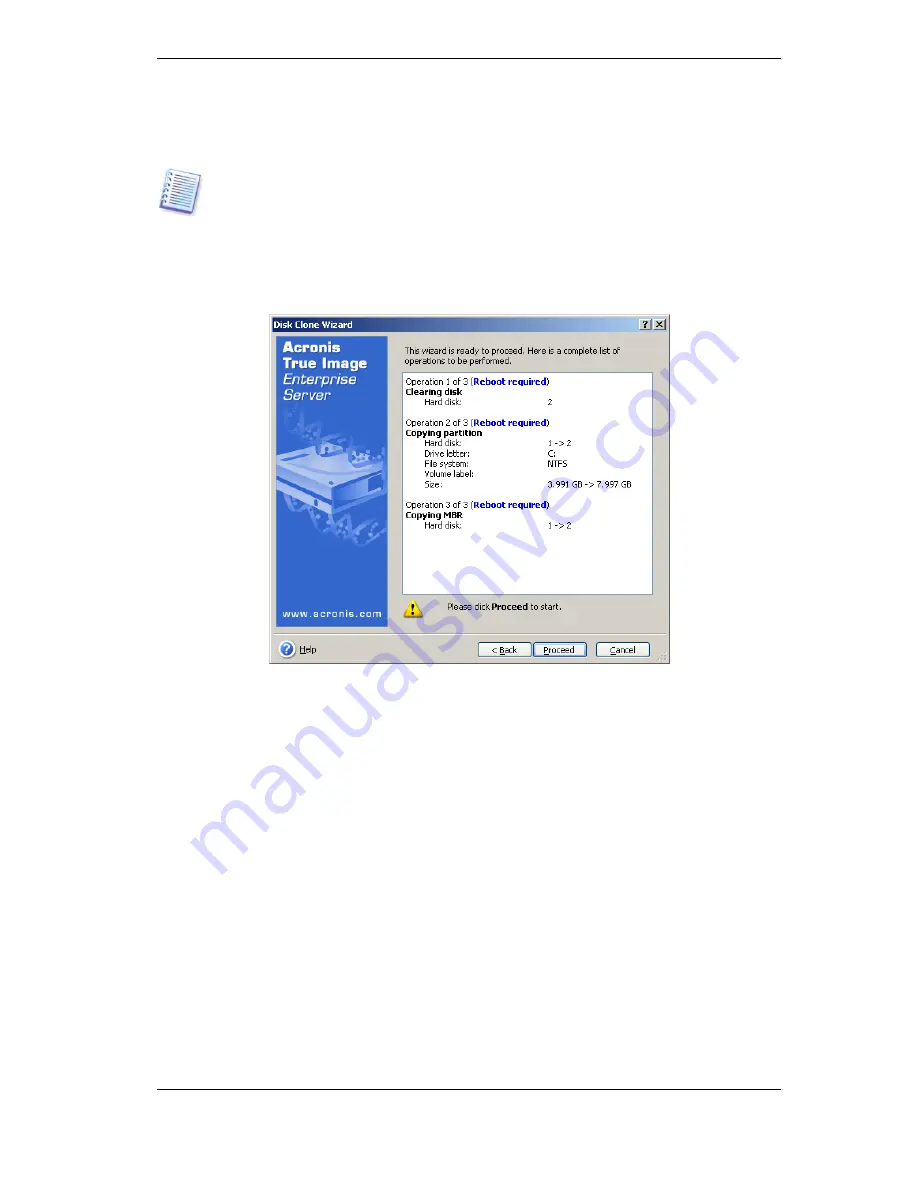
141 Copyright © Acronis, Inc., 2000-2009
Along with the hard disk number, you will also see disk capacity, label, partition and file
system information. Different partition types, including primary, logical and unallocated
space are marked with different colors.
If you selected manual partition creation earlier, the partition layout will look different.
This partitioning method is described below.
14.3.11 Cloning summary
In the next window, you will see a list of briefly described operations to be performed on
the disks.
Cloning a disk containing the currently active operating system will require a reboot. In
that case, after clicking
Proceed
you will be asked to confirm the reboot. Canceling the
reboot will cancel the entire procedure.
Cloning a non-system disk or a disk containing an operating system, but one that is not
currently active, will proceed without reboot. After you click
Proceed
, Acronis True Image
Echo Enterprise Server will start cloning the old disk to the new disk, indicating the
progress in a special window. You can stop this procedure by clicking
Cancel
. In that
case, you will have to repartition and format the new disk or repeat the cloning
procedure. After the operation is complete, you will see the results message.
14.4 Cloning with manual partitioning
14.4.1 Old and new disk partition layouts
The manual transfer method enables you to resize partitions on the new disk. By default,
the program resizes them proportionally.
In the next window, you will see rectangles indicating the source hard disk, including its
partitions and unallocated space, as well as the new disk layout.






























